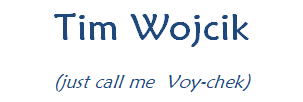Here are some writings that give a human voice to the men and women of the Cana story place, or Palestine/Israel on the 1st century CE. The reference number, such as ISBN, refers to that edition of the title that I own or found in research.
The Christ Commission, by Og Mandino (ISBN 0553277421 Bantam) Mandino uses the time travel approach to conduct a lawyer’s style investigation into the resurrection of Jesus. With Joseph of Arimathea as his guide around a Jerusalem six years after Christ’s crucifixion, protagonist Matt Lawrence is given the alter ego of a Roman historian (Matthias) charged with the task of investigating the death of Jesus. In the risk taking style of an investigative journalist, Lawrence/Matthais interviews most everyone from Caiaphas to the Marys to Peter to Pilate. 260 pages. Copyright 1980.
Christ the Lord: Out of Egypt (ISBN 0780345436832 Ballantine Books) and Christ the Lord: The Road to Cana (ISBN 9781400078943 Anchor), by Anne Rice – The first two of a planned four book treatment of the life of Jesus Christ by the widely read author of fiction ranging from the sacred to the occult.
Out of Egypt gives Jesus the voice of a precocious seven to eight year old. He has close family ties beyond his mother and father with brother James and an uncle named Cleophas. Rice makes numerous mention of the characters speaking in Greek, or Hebrew and references to the nearby Roman/Greek city of Sepphoris. The young Jesus, called Yeshua, reaches an epiphany after a family journey to Jerusalem.
The Road to Cana continues the Jesus story including Yeshua’s gift for working wonders. John the Baptist is introduced. The Romans desecrate the Jerusalem Temple. Also, a girl named Avagail comes into Yeshua’s life. This book concludes, as expected, with the wedding at Cana.
The Gospel According to Jesus Christ, by José Saramago (ISBN 156001411, A Harvest Book, Harcourt Brace) The author (winner of the 1998 Nobel Prize for Literature) gives a whimsical, earthy and at times judgmental imagining of God, Jesus, Mary and Joseph of Nazareth. Saramago mixes historical contingents (Mosaic purification laws, animal sacrifice) with the primitive lifestyle of the time. He makes repeated reminders of a woman’s second class status in this society. Guilt over the deaths of the Holy Innocents haunts Mary, Joseph and Jesus. Mary has many children. James is the second eldest, after Jesus. The author flirts with the sacrilegious, such as including a relationship between Jesus and Mary Magdalene. Humorous similes abound; ie “like filling a cavity in God’s tooth.” The author frequently speaks directly to the reader with wry comments or admonitions. Seven pages are given to the wedding feast at Cana. An attentive reading is required, as the author/translator doesn’t use quotation marks to define the dialogue. 377 pages, Copyright 1991, English translation from the Portuguese copyright, 1994.
The Gospel According to the Son, by Norman Mailer (ISBN 0679457836 Random House) In spare first person prose, Mailer gives voice to Jesus and the people of the Gospels. The spelling of the names is mostly contemporary. Over 15 pages is given to the the 40 Days in the Desert (with Devil) story. The author creates a philosophical one-on-one conversation with Jesus and Judas Iscariot. The Wedding at Cana story is recounted in two pages. The novel ends before the story of Easter. 242 pages. Copyright 1997.
The Gospel of the Beloved Disciple, by James P. Carse (ISBN 0060615761 Harper San Francisco) The prologue reminds readers of several gospels of Jesus that did not become canon. A old Samaritan woman is introduced. Jesus’ disciples seek her recollections for an unfinished “gospel”. She tells her first person story of Jesus in many short chapters. The author gives Jesus many parables to tell. The apostles, including Judas, are given voice. The drama ends with Jesus and Pilatus. 144 pages. Copyright 1997.
The Passion of Maryam, by Loren Woodson (ISBN 9781891386749 Plain View Press) Mary, mother of Jesus, is Maryam in this imaginative story from a woman’s perspective. Person and place names are adjusted. For example, Jesus is Yeshua, Nazareth is Natzret. The story begins with Yeshua’s conception in Maryam. It haunts Maryam through much of the story. Maryam is very human, with doubts, fears, petulance, and reverence for her Malkeinu. Maryam has another son. The Wedding at Cana story has a twist. Woodson tells a completed life of Maryam. Glossary provided. 227 pages. Copyright 2007.
Testament, by Nino Ricci. Review of Testament
The Testament of Mary, by Colm Toibin (ISBN 9781451688382 Scribner) Mary is now an old woman recollecting the events of her life and her son Jesus’ life. She ruminates. She questions her motives. She still has her doubts about Jesus’ mission and the meaning of his life. Martha and Mary, and Miriam are given character. A wedding feast at Cana is repeatedly referenced in Mary’s recollections although no water is changed to wine. The author spends several pages at the crucifixion on Calvary. 81 pages. Copyright 2012.
The Tomb: A Novel of Martha, by Stephanie Landsem (ISBN 978451689129, Howard, a Simon and Schuster Book) Martha is the head of the Bethany household which includes her youngish brother Lazarus and her married sister Mary and other family. A love story, Martha has a secret. A still young yet unmarried woman, Martha is pursued by a wealthy merchant. Her cousin Jesus, her brother Lazarus and sister Mary, her love interest and others… the author gives them voice. 320 pages. Copyright 2015.
